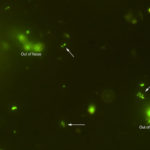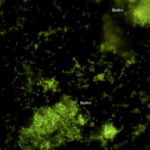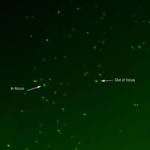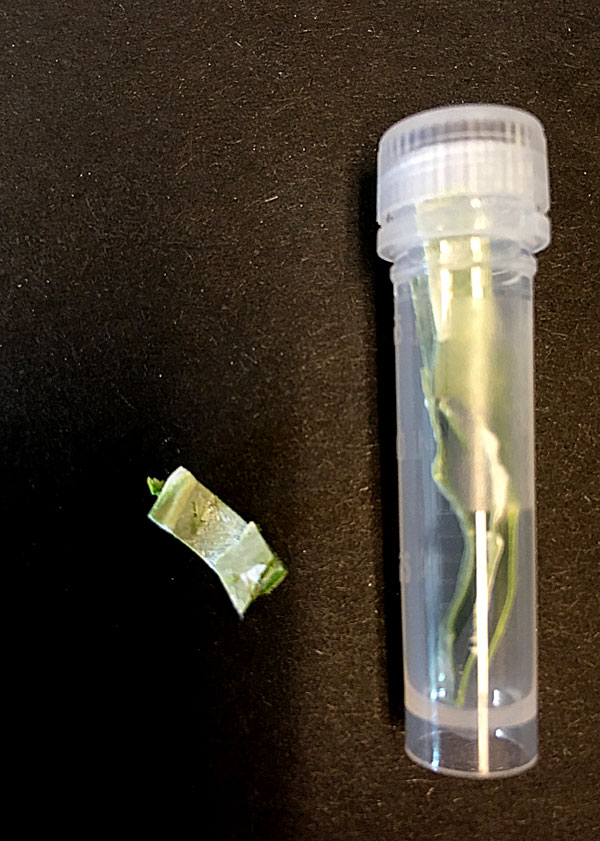
Foliar FPAT
You may get leaf material ("Foliar") for an FPAT sample. Since leaves are autofluorescent (chlorophyll) the best way to sample the possible microbes is to wash the leaves and test the liquid. (The leaf material here is coated with a bacteria-containing gelatin solution then lyophilized.)
Solid/ leaf material
- Leaves are wet, so the chance of endospores is low to none.
- Leaves also have intrinsic fluorescence (chlorophyll), so you should avoid PI as a probe and concentrate only on DAPI or SYTO. This saves time.
- Each sample of the triplet set should be evaluated separately to avoid cross-contamination.
- Flat surfaces, especially fluorescent surfaces pose a difficulty because of the fluorescence and opaque nature of the sample. You have two choices:
- Macerate or chop a small piece of the sample (2x2mm) and place in the well of a test slide for evaluation. Look at the edges of the leaf pieces for bacteria or yeast as some are always washed off. This is the less desirable option.
- Place a small sample in a micro-centrifuge tube, add approx.0.25ml water, let sit 1 minute, vortex 15s, aliquot 10µl of the liquid into the well of an Insti-Fluor slide (DAPI and SYTO), Combo2, or CF slide.
- Mark each test slide with the FPAT vial designation (“A”, “B”, or “C”)
- Dry at 42C 5–10 minutes
- Add 7µl immersion oil
- Apply coverslip and evaluate.
Example Scenario: Three famous ballparks have recently sold burgers that made people sick. Immediately afterward the SF Chronicle, LA Times, and the Boston Globe received an email indicating that the iceberg lettuce from one vendor at each stadium was contaminated with E.coli bacteria. Your CST has been called in to assist local authorities in the analysis of each of these samples to determine whether the lettuce in the salads contained bacteria.
For this test use either liquid probes or Insti-Fluor Combo2 test slides.
- Sample ALS-FPAT-D: a vial containing lettuce samples from AT&T Park.
- Sample ALS-FPAT-E: a vial containing lettuce samples from Dodger Stadium.
- Sample ALS-FPAT-F: a vial containing lettuce samples from Fenway Park.
ANALYSIS OBJECTIVES: The Incident Commander requests that you use fluorescence microscopy to determine which sample(s) (if any) contain bacteria.
Procedure:

Add water to a small piece of your sample
To wash off microbes, add water to your sample, incubate at RT for a few minutes, vortex. Use only a small portion of your allotted foliar sample in case you have to repeat.
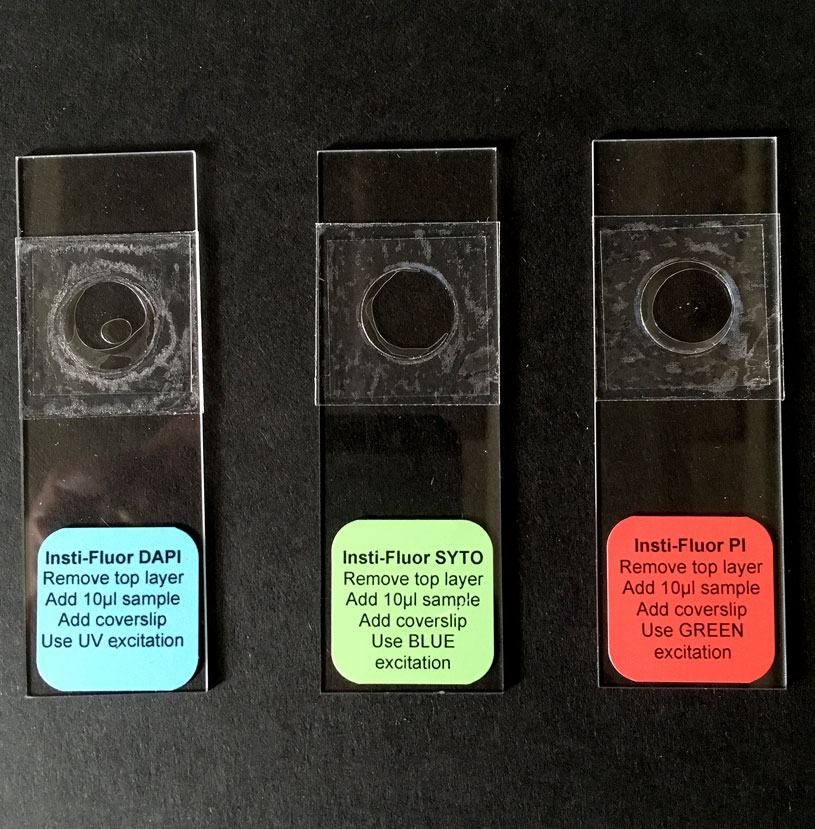
Since you're looking for bacteria, use DNA probes
You can use either liquid probes (1µg/ml) or Insti-Fluor Multi or Combo2 slides. Combo2 would also ID endospores.
What you may see
Biofilms may be the most common bacterial presence on leaves—especially if they were embedded in gelatin.
If, however, this is a real-world scenario (salad bar), then expect the bacteria to be more dispersed.
